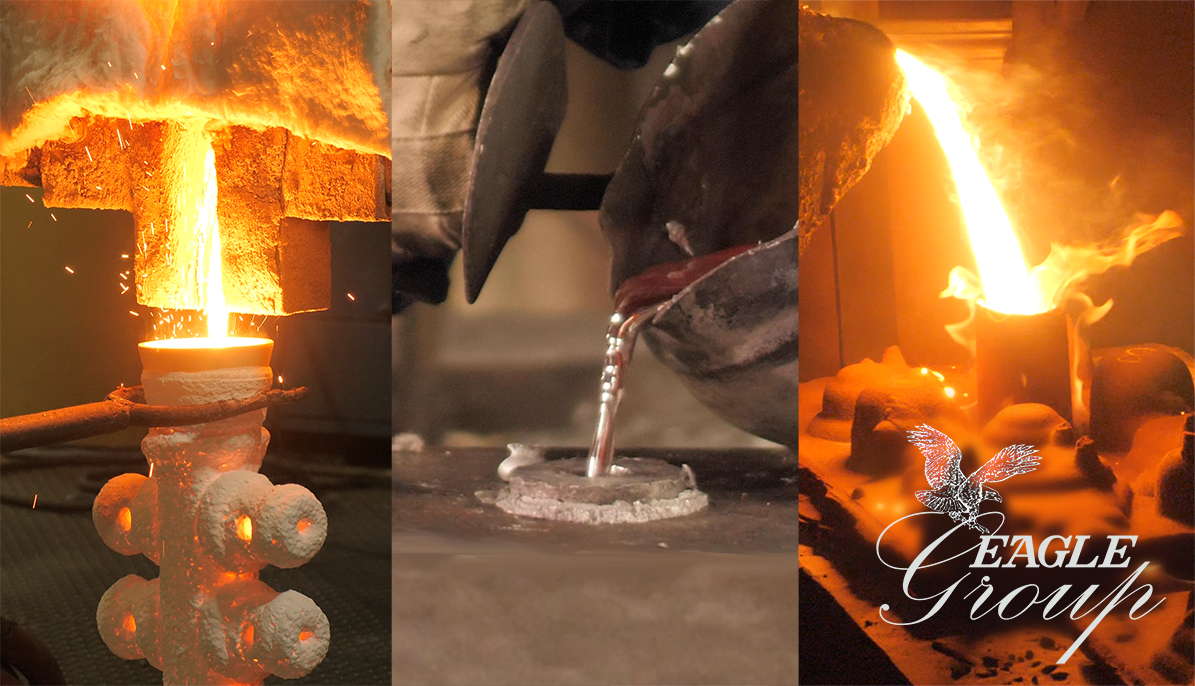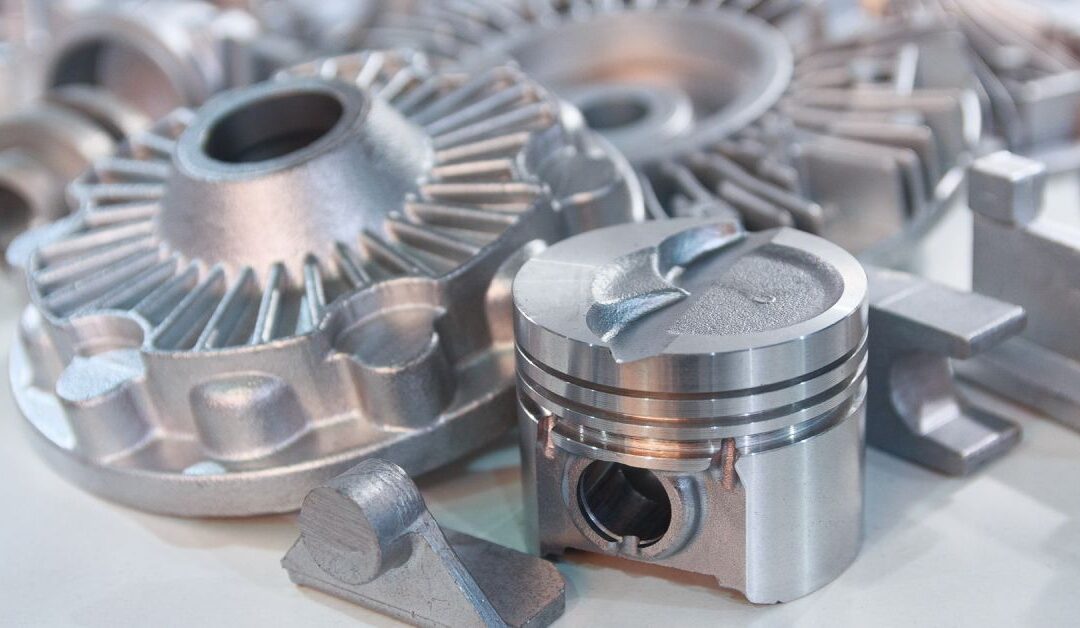Understanding the Steel Castings Refine: A Comprehensive Overview for Beginners
The Metal Casting procedure is an essential method in making that transforms molten metal into strong types. Beginners need to grasp the various approaches included, such as sand spreading and die casting. Comprehending the materials, layout principles, and security steps is similarly important. Each facet plays an important function in achieving effective results. As one navigates these intricacies, the question of just how to maximize each step for boosted outcomes becomes significantly relevant.
The Basics of Steel Casting
Metal Casting has actually evolved over centuries, its essential concepts remain important and constant to the manufacturing procedure. At its core, Metal Casting entails the change of molten metal into solid things via various methods. The procedure begins with the creation of a mold and mildew, which defines the form of the end product. Once the mold and mildew is prepared, steel is heated to its melting factor and put into the tooth cavity. After cooling, the steel strengthens, taking the shape of the mold.
There are a number of casting techniques, consisting of sand casting, financial investment spreading, and pass away spreading, each with one-of-a-kind benefits and applications. The choice of method depends upon factors such as manufacturing volume, product kind, and desired precision. Once cast, the final product may go through extra processes like machining or surface area therapy to attain the called for surface and requirements. Understanding these essentials is crucial for any person interested in the field of Metal Casting.

Recognizing Products Made Use Of in Metal Casting
Materials play an essential function in the Metal Casting process, affecting the final item's properties and efficiency. Different metals are made use of, including light weight aluminum, steel, iron, and bronze, each offering distinct characteristics matched for specific applications. Aluminum is corrosion-resistant and light-weight, making it ideal for automobile parts. Iron, specifically cast iron, is preferred for its excellent wear resistance and durability. Steel provides high stamina and adaptability, often utilized in hefty equipment components. Bronze, known for its corrosion resistance and machinability, is frequently utilized in aquatic applications.
In addition to the metals, different casting products, such as sand, plaster, and ceramic, are made use of to develop mold and mildews. Sand spreading, one of the most prevalent technique, makes use of silica sand due to its thermal stability and capability to form detailed forms. Plaster and ceramic mold and mildews use better information yet may require more complicated processes. The choice of materials straight impacts the effectiveness, expense, and high quality of the casting procedure.
The Style Refine: From Idea to Blueprint
The layout procedure in Metal Casting begins with the first concept advancement, where concepts are generated and assessed. This is complied with by the application of CAD modeling methods, enabling for accurate visualizations of the design. Finally, the plan completion steps assure that all requirements are accurately recorded for manufacturing.
First Principle Growth
Preliminary principle advancement marks an important stage in the Metal Casting procedure, where ideas transform right into substantial layouts. During this stage, designers team up with engineers and stakeholders to brainstorm and fine-tune initial ideas. They consider factors such as functionality, aesthetic appeals, and manufacturability, ensuring that the design fulfills the required specs and efficiency standards. Sketches and rough drafts are developed to imagine the principles, enabling preliminary assessments of usefulness and cost-effectiveness. This phase also entails identifying products and potential casting approaches that align with the style objectives. Ultimately, preliminary principle development prepares for a complete blueprint, directing the succeeding stages of the spreading process and making certain a successful change from concept to fact.
CAD Modeling Techniques
Changing ideas right into precise designs, CAD modeling methods play an essential role in the Metal Casting procedure. These techniques utilize advanced software application to create in-depth three-dimensional models that precisely mirror the desired product. By employing devices such as parametric modeling, strong modeling, and surface area modeling, developers can manipulate measurements and forms effortlessly. CAD systems also assist in simulation and analysis, enabling the identification of prospective problems prior to production starts. This aggressive approach decreases material waste and maximizes the design for manufacturability. Furthermore, CAD designs can be conveniently modified, enabling quick iterations based upon comments. Essentially, CAD modeling serves as the backbone of the design procedure, connecting the space in between first principles and the ultimate production-ready designs.
Plan Finalization Tips
Adhering to the production of thorough CAD versions, the following phase includes blueprint completion, which is crucial in equating digital styles into actionable prepare for manufacturing. This procedure begins with examining the CAD designs for accuracy and conformity with specifications. Once verified, the dimensions, resistances, and material requirements are meticulously outlined to guarantee quality. Integrating comments and notes aids communicate vital information pertaining to casting processes, surface area finishes, and setting up requirements. The wrapped up blueprint undertakes an extensive authorization process, commonly involving cooperation with designers and manufacturing teams to attend to any type of possible issues. Modifications are made and authorizations gotten, the blueprint is officially launched, serving as the foundational paper for the succeeding stages of Metal Casting, including pattern making and mold layout.
The Metal Casting Methods Discussed

Metal Casting strategies include a selection of approaches made use of to form liquified steel right into preferred types. These methods vary according to the kind of material, complexity of the style, and manufacturing quantity. Sand casting is one of one of the most usual approaches, including the creation of a mold and mildew from sand to hold the molten metal. Investment casting, or lost-wax spreading, permits intricate styles by using a wax pattern that is dissolved. Pass away casting uses high-pressure injection of molten metal into a mold and mildew, appropriate for mass production. Various other techniques include long-term mold and mildew casting, which makes use of recyclable molds, and centrifugal casting, where rotational pressures assist in filling up the mold and mildew. Each method has its benefits and applications, making it crucial for check that producers to select the suitable method based on their details needs and requirements. Recognizing these methods is vital for anybody associated with the Metal Casting process.
Ending Up Processes: Enhancing Your Casted Product

Finishing procedures play an important duty in improving the quality and appearance of casted items. Numerous surface therapy strategies, such as sprucing up and finish, are utilized to improve resilience and visual appeals. Additionally, top quality examination techniques guarantee that the last product meets specified standards and performance requirements.
Surface Therapy Techniques
A selection of surface therapy techniques play an essential role in boosting the high quality and long life of casted products. These strategies include techniques such as shot blasting, brightening, and finish. Shot blasting properly eliminates surface blemishes, enhancing the practical and visual attributes of the casting. Polishing offers a smooth coating, which is particularly vital for ornamental applications and components needing very little rubbing. Layer techniques, such as electroplating or powder layer, offer added security versus rust and wear, guaranteeing toughness. Surface area therapies can boost attachment for subsequent procedures, such as paint or bonding. By employing these methods, makers can accomplish premium surface area quality, which is vital for the efficiency and life-span of Metal Casting in various applications.
Top Quality Evaluation Techniques
Efficient quality examination approaches are vital for assuring the integrity and performance of casted items after the completing procedures. Different strategies are used to examine the quality of Metal Casting, including visual evaluation, dimensional checks, and non-destructive screening (NDT) Visual inspection enables the identification of surface issues, while dimensional checks guarantee that items meet specified tolerances. NDT approaches, such as ultrasonic testing and radiographic assessment, give much deeper insights right into internal integrity without damaging the castings. Additionally, mechanical screening, such as tensile and hardness tests, reviews product residential or commercial properties - Wisconsin Aluminum Foundry. By utilizing a combination of these approaches, makers can improve product quality and reliability, eventually resulting in greater customer fulfillment and minimized manufacturing costs
Safety And Security Considerations in Metal Casting
While the Metal Casting process provides various advantages, it additionally offers a series of safety and security dangers that must be very carefully managed. Workers in casting centers are revealed to high temperatures, molten metals, and hazardous products, which can lead to serious injuries if appropriate preventative measures are not taken. Personal safety tools (PPE) such as heat-resistant gloves, deal with web guards, and protective clothing is crucial to reduce threats.
In addition, the visibility of fumes and dust necessitates correct air flow systems to assure air high quality - Aluminum Foundry. Routine training on security protocols is essential for all workers to acknowledge prospective dangers and react successfully. Emergency situation treatments ought to be developed, including fire precaution and emergency treatment schedule. Upkeep of tools and proper handling of materials even more add to a more secure working environment. By focusing on these safety and security considerations, Metal Casting operations can secure their workforce and preserve reliable production procedures
Frequently Asked Questions
What Are the Environmental Impacts of Metal Casting?
Metal Casting can cause environmental impacts such as air and water pollution, resource exhaustion, and energy usage. Additionally, improper waste management and exhausts from shops contribute to eco-friendly disturbances and wellness risks for neighboring communities.
How Do I Choose the Right Steel for Spreading?
To select the ideal metal for casting, one need to take into consideration factors such as mechanical properties, corrosion resistance, thermal conductivity, and price. Evaluating the desired application and ecological conditions is essential for ideal option.
What Are the Common Defects in Metal Casting?
Common issues in Metal Casting consist of porosity, contraction, sand addition, and misruns. These concerns commonly arise from incorrect product choice, inadequate design, or imperfections in the spreading procedure, affecting the final item's top quality and performance.
How Can I Boost My Metal Casting Abilities?
To boost Metal Casting skills, one must practice constantly, research study spreading strategies, analyze previous tasks for issues, seek comments from experienced casters, and constantly experiment with different products and techniques to enhance proficiency and understanding.
What Is the Expense of Beginning a Steel Spreading Business?
Starting a steel casting organization usually requires a preliminary financial investment of $5,000 to $50,000, relying on equipment, products, and center prices. Aspects like location and scale can greatly influence overall start-up expenses.
The Metal Casting procedure is a fundamental strategy in producing that transforms molten steel right into strong types. Beginners have to comprehend the various approaches included, such as sand next casting and pass away spreading. There are numerous casting methods, consisting of sand casting, investment casting, and die casting, each with distinct benefits and applications. Investment casting, or lost-wax casting, allows for elaborate layouts by using a wax pattern that is thawed away. Other techniques include irreversible mold casting, which utilizes multiple-use mold and mildews, and centrifugal spreading, where rotational pressures assist in filling up the mold.